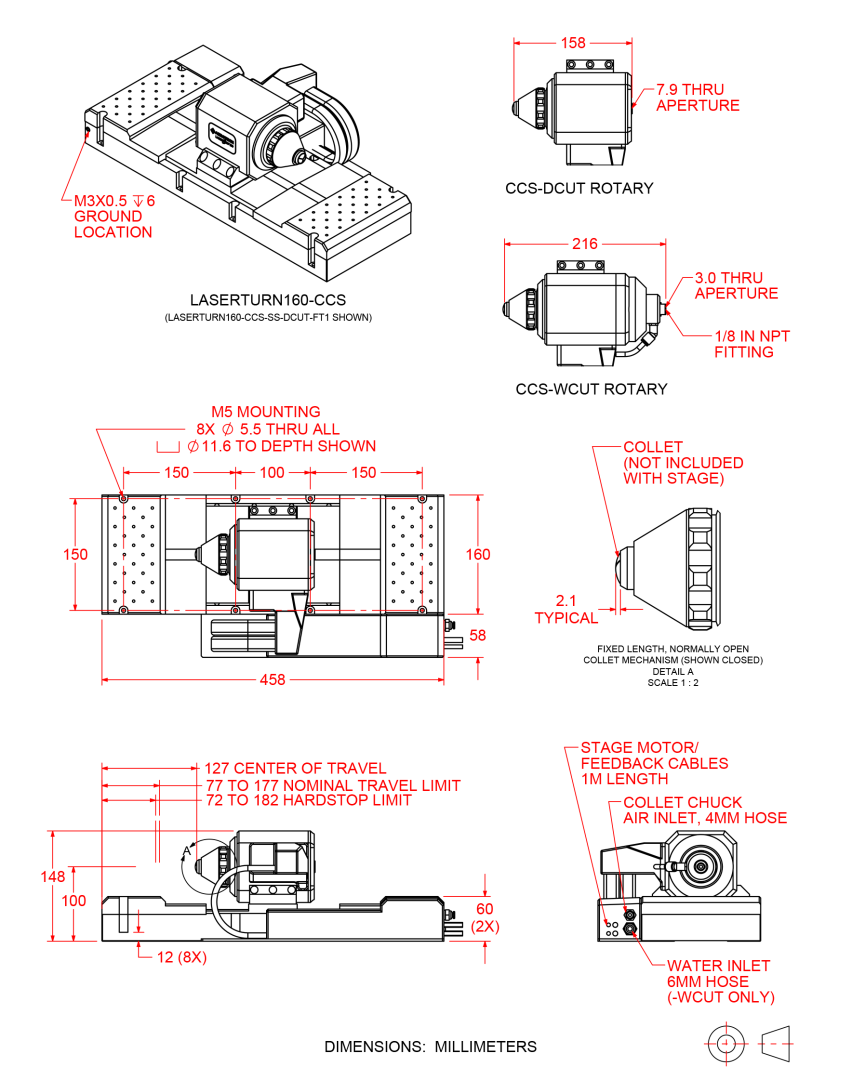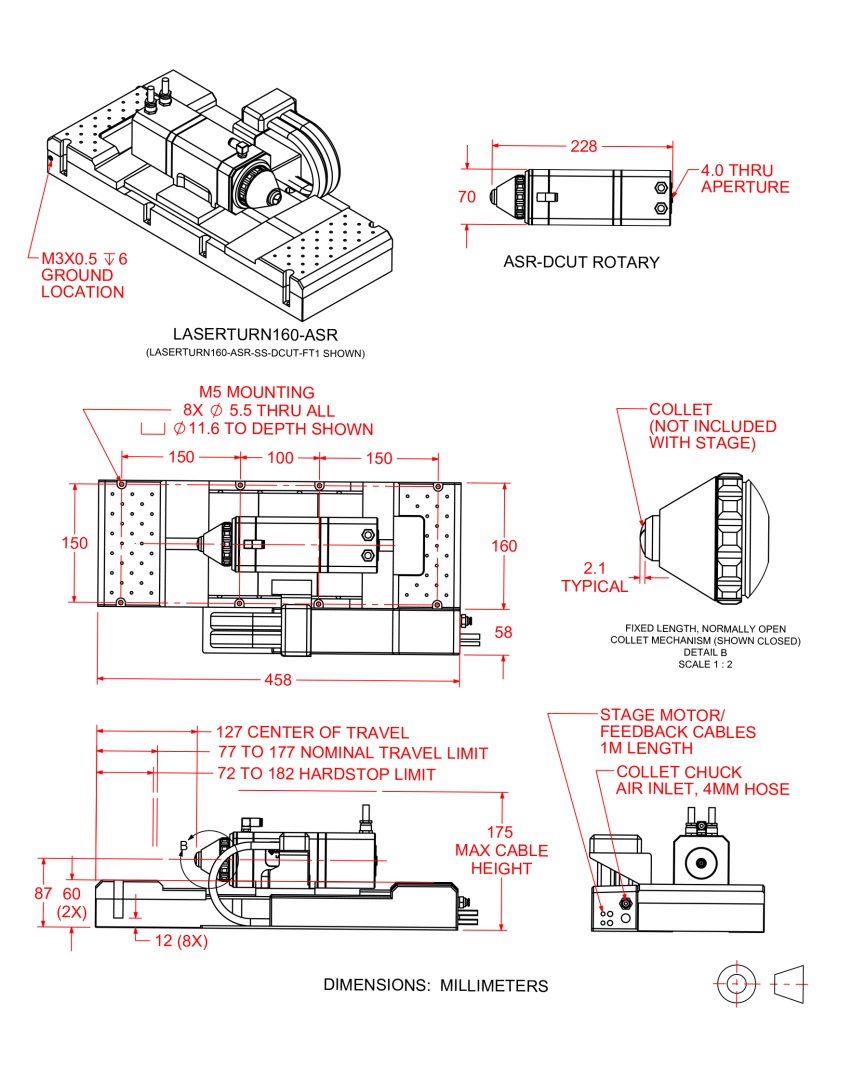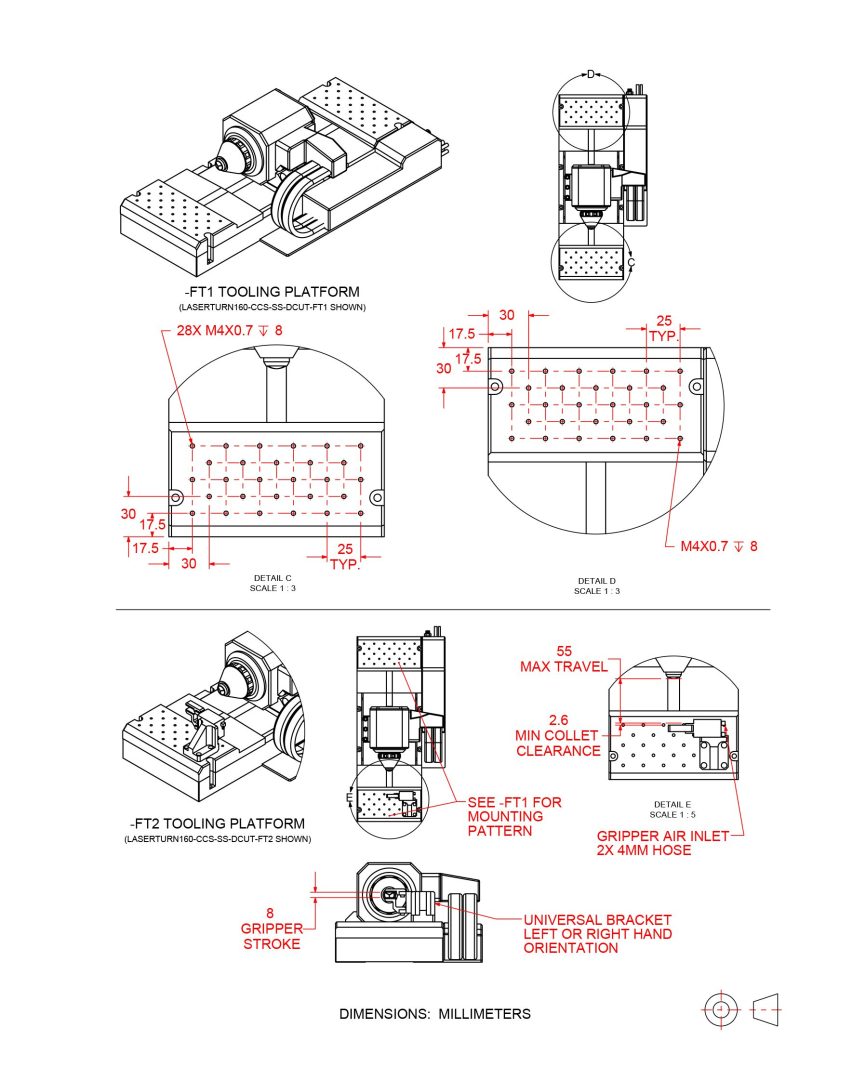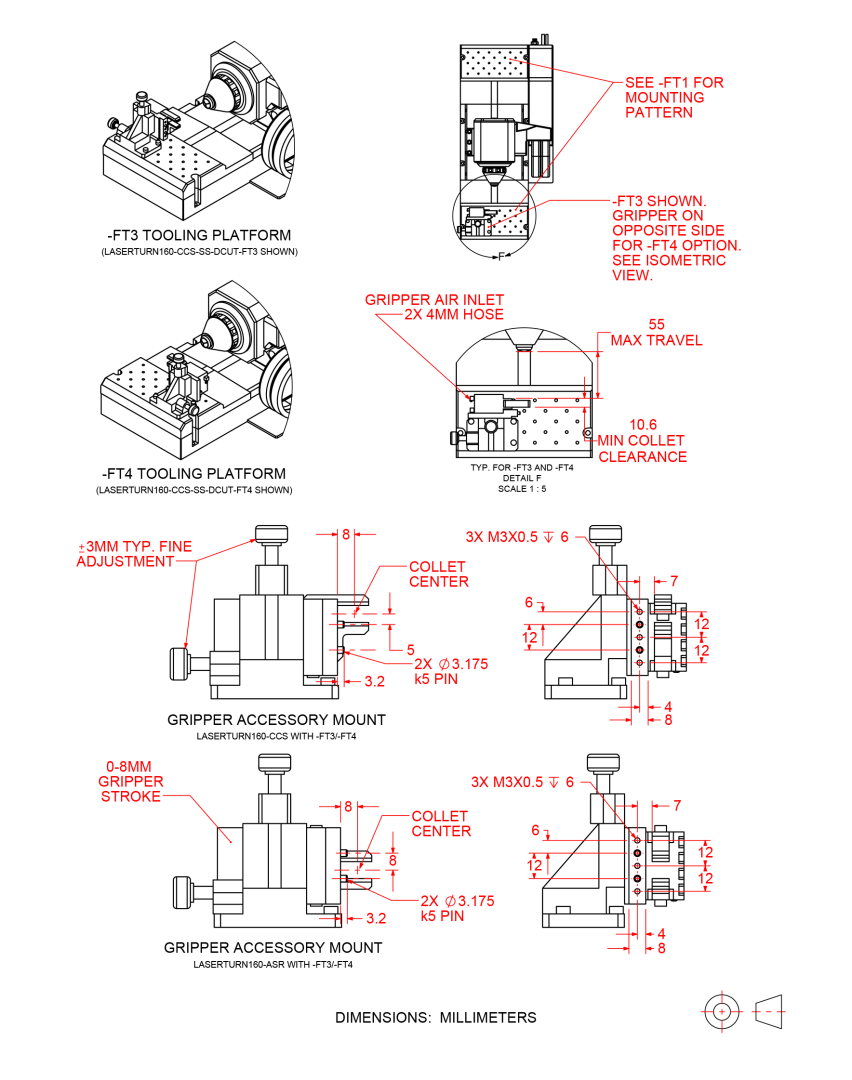LaserTurn160 Laser Machining System
LaserTurn160 is the leading cylindrical laser machining platform for manufacturing highly reproducible parts such as cardiovascular and neural stents, guidewires, hypotubes and more. This cutting-edge system integrates ultra-precise linear and rotary axes along with material handling features. Optimized for high dynamics, LaserTurn160 is capable of unprecedented speeds and accelerations while maintaining outstanding following accuracy, resulting in excellent process throughput and superb part quality and consistency over time.
Description
Specifications
Dimensions
Ordering Info
Downloads
Description
Description
Specifications
Dimensions
Ordering Info
Downloads
Description
Key Features
- Increases process throughput up to 40% or more with NEW high-dynamic rotary axis option
- Dead-length, pneumatically actuated collet minimizes tube motion during gripping & regripping
- Optional alignment gripper enables repeatable tube advance for easily processing longer tubes
- Accommodates tube diameters from 0.1 mm to 7.9 mm
- Direct-drive motors & crossed-roller bearings deliver ultra-smooth motion for manufacturing highly reproducible parts
Key Applications
- Medical device manufacturing
- Stent cutting
- Catheter, guidewire & other hypotube manufacturing
- Cylindrical laser machining
Maximum Throughput, Minimum Error Motion
LaserTurn®160 is the most capable and effective cylindrical laser machining motion platform available. Optimized to provide the most precise motion trajectories with ultra-high dynamic performance, LaserTurn160 can improve your process throughput by 40% or more compared to similar cylindrical machining systems. Rotary axis options meet your exact needs, so you can process tubes up to 7.9 mm diameter with our versatile CCS130DR rotary stage or achieve speeds and accelerations up to 3000 rpm and accelerations up to 8000 rad/s² with our high-dynamic ASR1300 rotary stage. Both options are compatible with Type-D collets and an optional front gripper mechanism, allowing you to easily process tubes of nearly any length. Ideal for machine builders, system integrators, contract manufacturers and end-users, LaserTurn160’s advanced performance capabilities will help you to manufacture greater volumes of highly reproducible parts in less time.
Integrated Material Handling
LaserTurn160 is available with features for convenient, precise material handling. A clear aperture allows tube loading from the front or rear of the rotary axis, and the collet chuck accepts Levin Type-D collets to support tubes up to 7.9 mm diameter depending on the configuration. The collet closer is designed to minimize axial tube motion during clamping and regripping operations by keeping the collet stationary and moving the tapered mating surface during opening and closing of the collet. LaserTurn160 is configurable with optional gripper mechanisms to hold the workpiece stationary while the collet is opened and the rotary stage is repositioned for regripping. Plus, the front and rear tooling platforms allow for easy installation of process-specific fixtures such as bushing alignment assemblies, part collection mechanisms and more. This design offers versatility and maximizes precision during the tube-advance process, making it easy to manufacture tubes of nearly any length.
Direct-Drive Technology
LaserTurn160 utilizes direct-drive noncontact motor and feedback technology for both the linear and rotary axes. Direct-drive motors provide significantly higher throughput and maintenance-free operation, which are considerable advantages compared to screw- and gear-drive technology. Plus, linear and rotary encoders coupled directly to carriage and shaft provide the highest possible level of system accuracy and repeatability, thus providing for a long and consistent lifetime of manufacturing highly precise and reproducible parts.
Advanced Control Architecture
The LaserTurn160 is available with Aerotech’s Automation1 Software-Based Machine Controller (iSMC). The Automation1-iSMC is a part of the Automation1 high-performance motion control platform which also includes the Automation1 Motion Development Kit (MDK). Automation1 drives are networked to the controller over the HyperWire® fiber optic communication bus. This ultra-fast bus and premium servo motor drive hardware enable extreme levels of optimization across several axes of motion. Advanced trajectory generation capabilities such as multi-block lookahead minimize geometric errors in tight profiles by transparently regulating cutting speed. Aerotech’s Position Synchronized Laser Firing Output (PSO) functionality automatically adjusts the laser pulse frequency to match the current cutting speed to maintain optimal laser power coupling.
Ordering Information
Rotary Axis (Required)
| Option | Description |
| -CCS | CCS130DR-160 direct-drive rotary collet stage, holds up to 7.9 mm dia. workpiece |
| -ASR | ASR1300 direct-drive rotary collet stage, high dynamics, holds up to 4.0 mm dia. workpiece |
Rotary Speed (Required)
| Option | Description |
| -SS | Standard speed |
| -HS | High speed (available only with -ASR option) |
Cutting Configuration (Required)
| Option | Description |
| -DCUT | Dry cutting configuration |
| -WCUT | Wet cutting configuration with fluid rotary union (available only with -CCS option) |
Front Tooling Options (Required)
| Option | Description |
| -FT1 | Front tooling platform |
| -FT2 | Front tooling platform, metric, with gripper |
| -FT3 | Front tooling platform, metric, with right-hand alignment gripper |
| -FT4 | Front tooling platform, metric, with left-hand alignment gripper |
Metrology, Linear (Required)
| Option | Description |
| -PL1 | Linear metrology, uncalibrated, with performance plots |
| -PL2 | Linear metrology, calibrated with performance plots |
Metrology, Rotary (Required)
| Option | Description |
| -PL0 | No performance plots |
| -PL2 | Rotary metrology, calibrated with performance plots |
Integration (Required)
Aerotech offers both standard and custom integration services to help you get your system fully operational as quickly as possible. The following standard integration options are available for this system. Please consult Aerotech if you are unsure what level of integration is required, or if you desire custom integration support with your system.
| Option | Description |
| -TAS | Integration - Test as system Testing, integration, and documentation of a group of components as a complete system that will be used together (ex: drive, controller, and stage). This includes parameter file generation, system tuning, and documentation of the system configuration. |
| -TAC | Integration - Test as components Testing and integration of individual items as discrete components that ship together. This is typically used for spare parts, replacement parts, or items that will not be used together. These components may or may not be part of a larger system. |
Accessories (to be ordered separately)
| Option | Description |
| Collet-D-CLTxx | Levin Type D collet, 0.1 mm to 7.9 mm part diameter sizes available |
| RingSeal-D-RSxx | Ring seal for wet cutting - consult Aerotech for available sizes |
| CGF | Collet and Gripper Filtration Kit |





